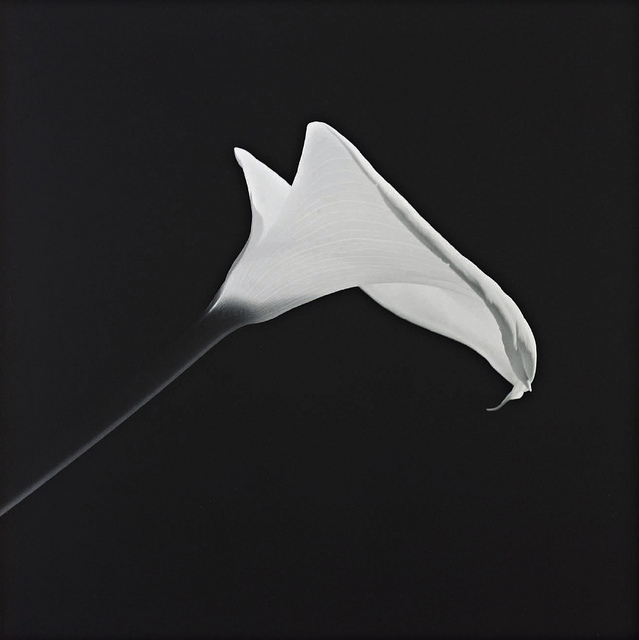I remember the first time I saw a Mapplethorpe, rather—the first time I saw the darker side of a Mapplethorpe.
It was my third date with a guy. He invited me to lunch at his New York City apartment. When I walked in, I saw numerous gadgets—a television screen that dropped down from the ceiling and bed on a revolving platform. But the one thing that caught my attention above all else was the large black and white photograph hanging on the wall. It was a nude male with a whip snaking down his body like a long tale. I knew I had just arrived at the den of inequity.
He watched as I stared at the photograph. “Robert Mapplethorpe,” he said. I replied inquisitively, “The same Mapplethorpe who photographs calla lilies?” “Yes,” he said, “Those erotic cala lilies that are so reminiscent of vaginas.” And that was the day I lost my Mapplethorpe virginity.
This artist who I always associated with pure, white, curvaceous lilies had now become a sexual deviant. Was he infatuated with beauty, or like my date said, intrigued with the darker side of human sexuality? The truth is both. Mapplethorpe said, “Beauty and the devil are the same.” He strived to create perfection and he was obsessed with beauty, but the truth is he was never satisfied on his quest to attain the ideal.
Perhaps this is the tension we see in his work, his desire to portray the darker side of desire as beautiful and, in fact, natural. It is this portrayal that makes him controversial and viewers so uncomfortable—because they feel voyeuristic and perhaps even a little perverted for enjoying these images.
And there we see the duality of nature in its rawness. We are all innocent and pure, yet curious, and sometimes our desires lead us into areas of sexuality that we do not care to share. Maybe they embarrass us or scare us because we feel they are wrong, but Mapplethorpe just shows us they are real, natural and beautiful. By making them larger than life, in black and white, he takes the mystery out of those realms of eroticism that we are curious about and do not dare to ask.
Mapplethorpe wants us to see sexuality and all its facets as just another part of nature, as simple and beautiful as a flower. And the human body, beautiful when viewed in a certain light, can be evil and darker. It doesn’t have to be—only if the mind chooses to go there.
And Mapplethorpe takes us there. He leaves nothing to the imagination, he throws it in our face, but not in a garish way. He is more suggestive, and artfully captures the lines, the beauty and the perfection of a natural form and makes it lascivious. And that is what disturbs us—how can something so innocent, so beautiful, turn us on? And after all, isn’t that the duality of human sexuality?
We are torn between what feels right and what we are told is logically wrong.
That is why Mapplethorpe is so iconic—he captures that tension simply, without effort, and makes us call into question our own values and our own sexuality and wonder why we are so scared to accept the darker side of beauty.
Relephant Read:
10 Honestly Erotic Quotes to Turn a Closed Heart Open & Make a Serious Face Blush.
Author: Jane CoCo Cowles
Volunteer Editor: Keeley Milne; Editor: Emily Bartran
Photos: cea +/Flickr



Read 0 comments and reply